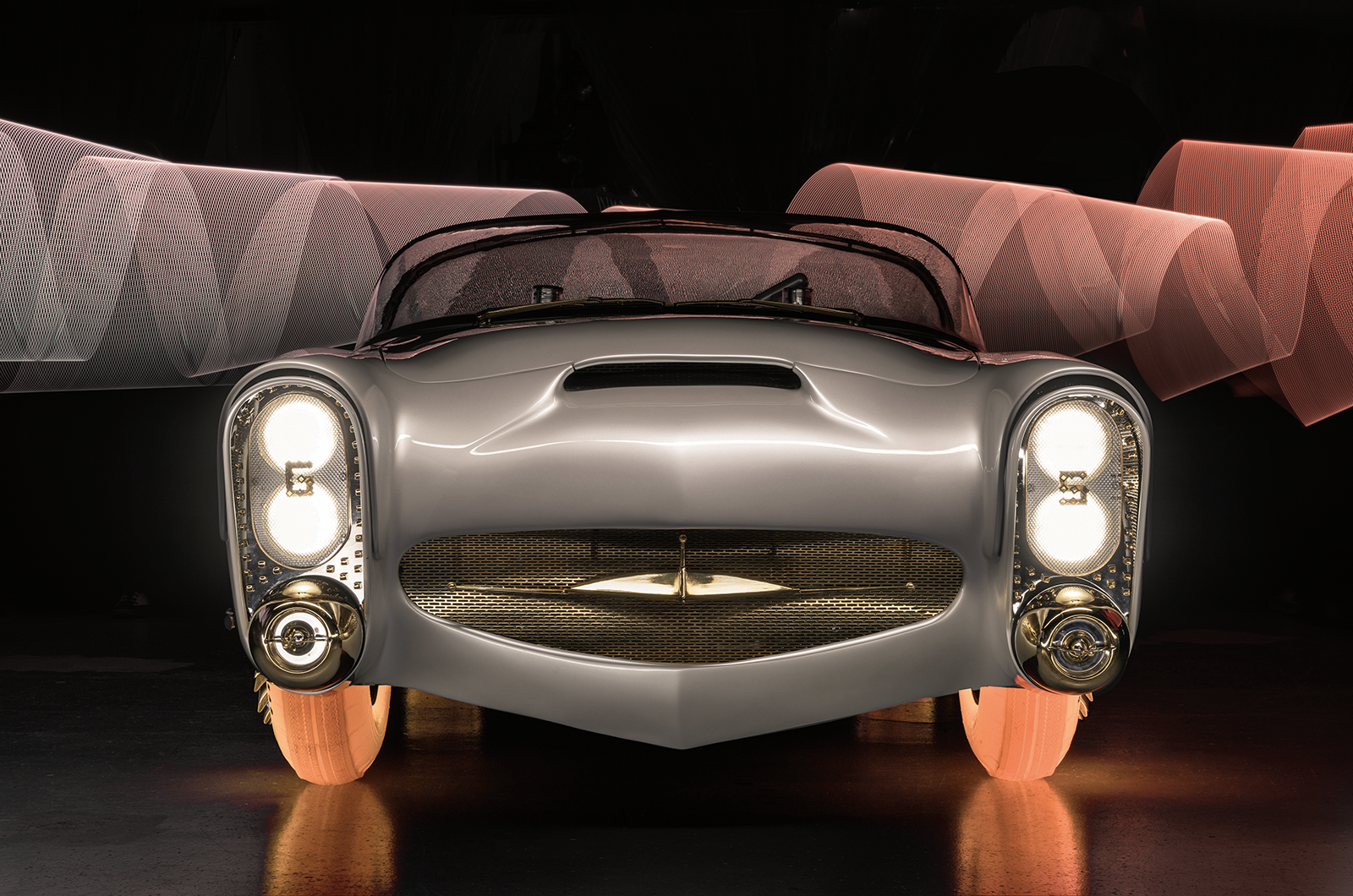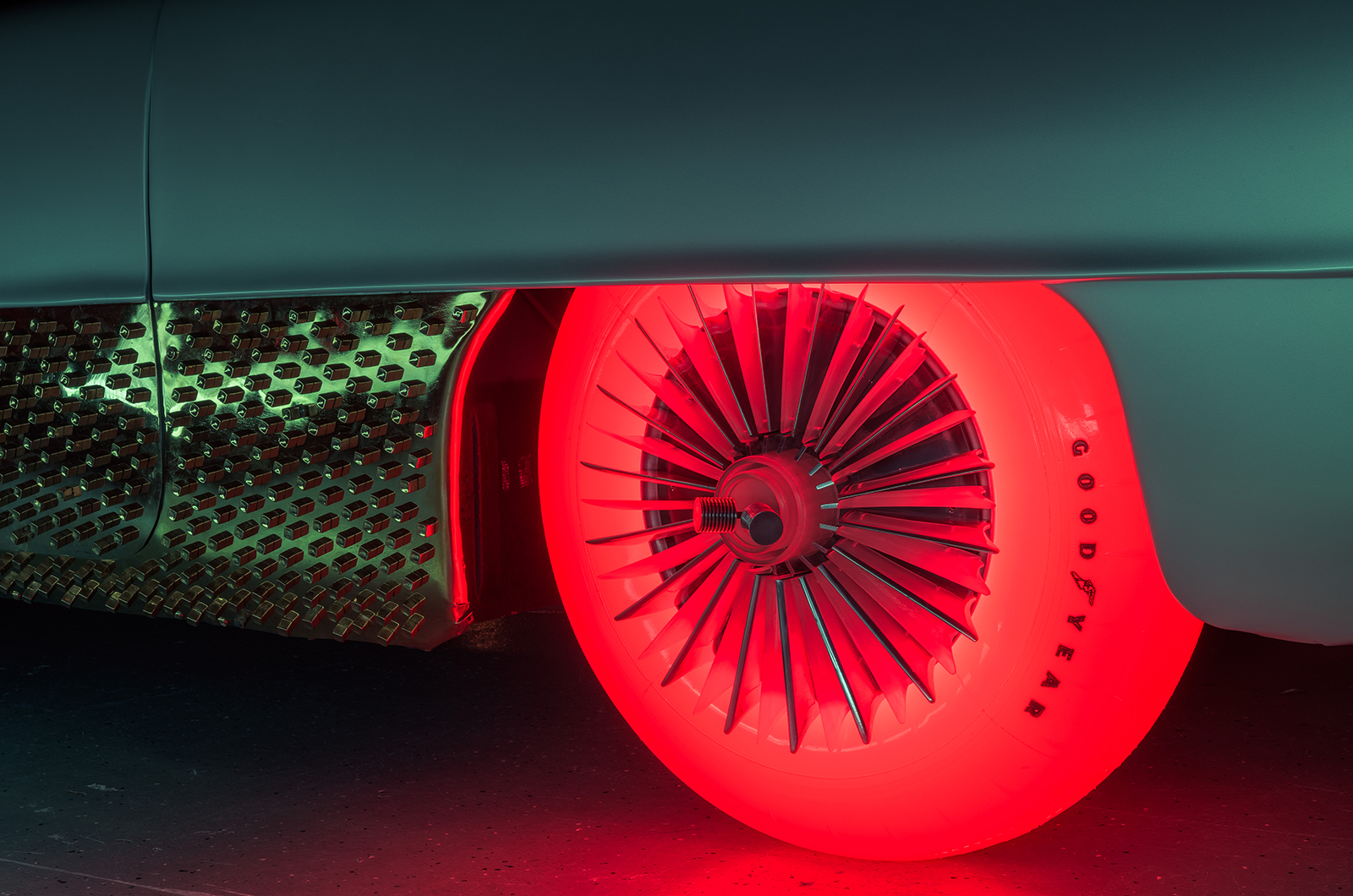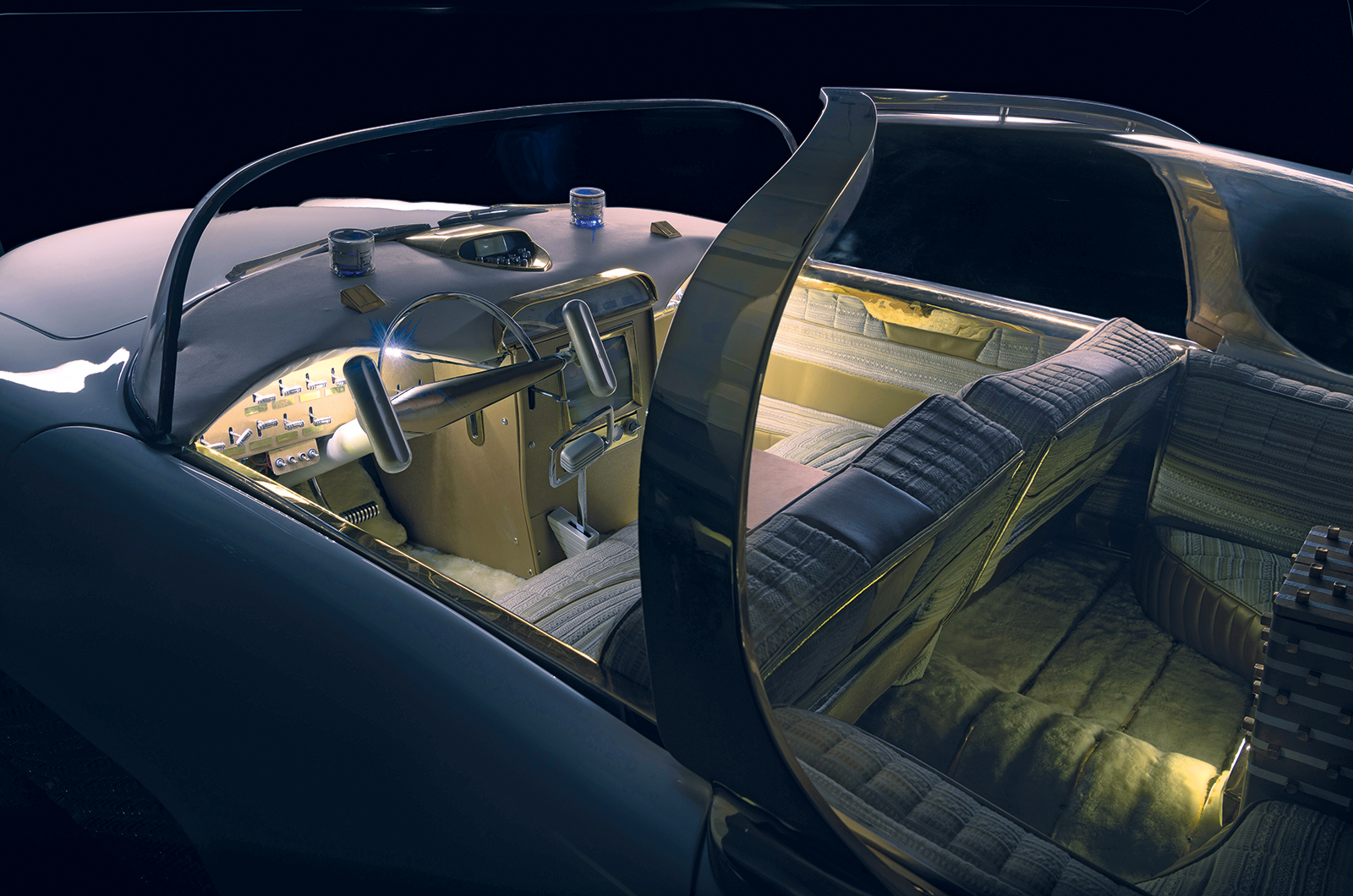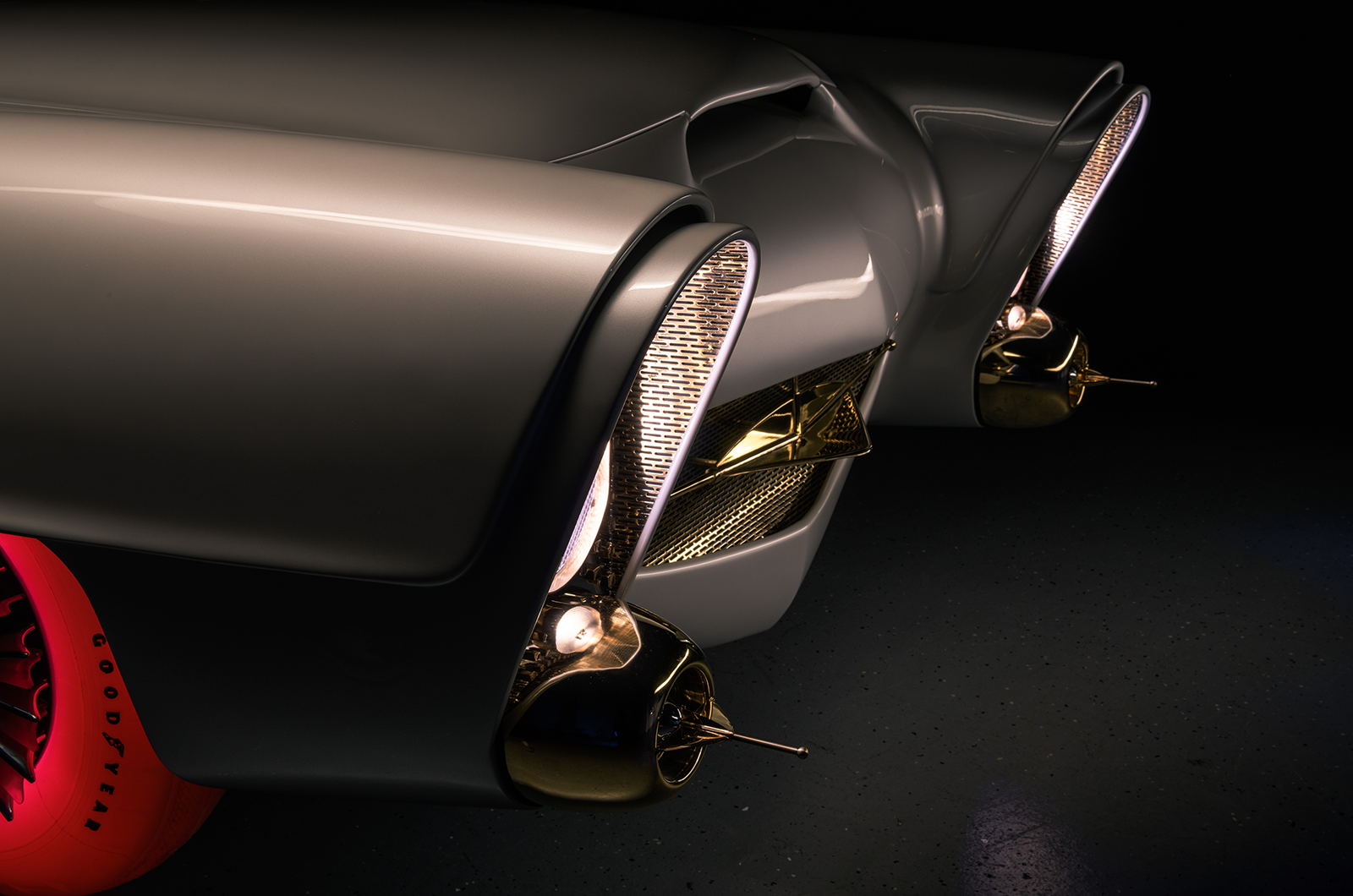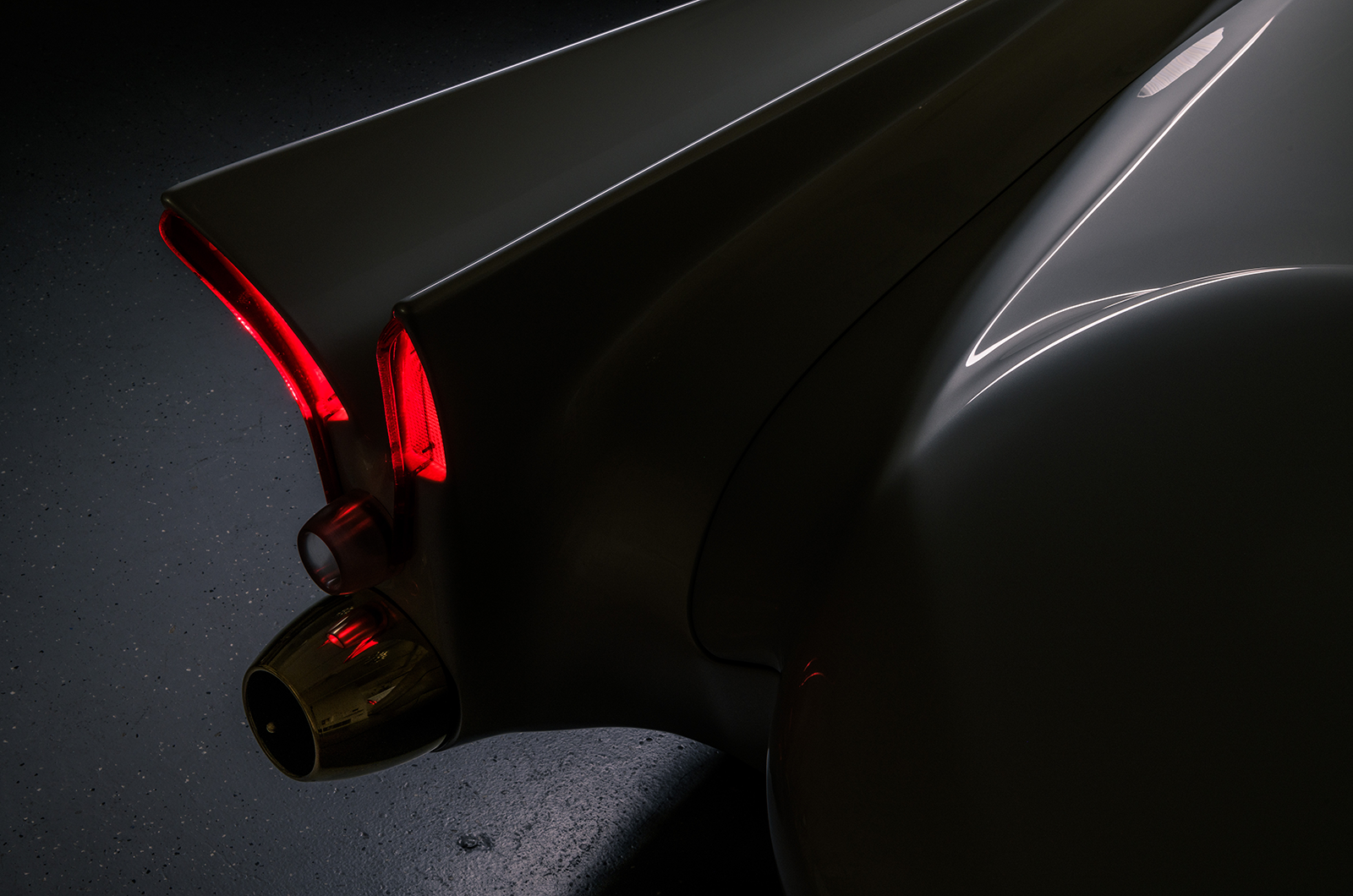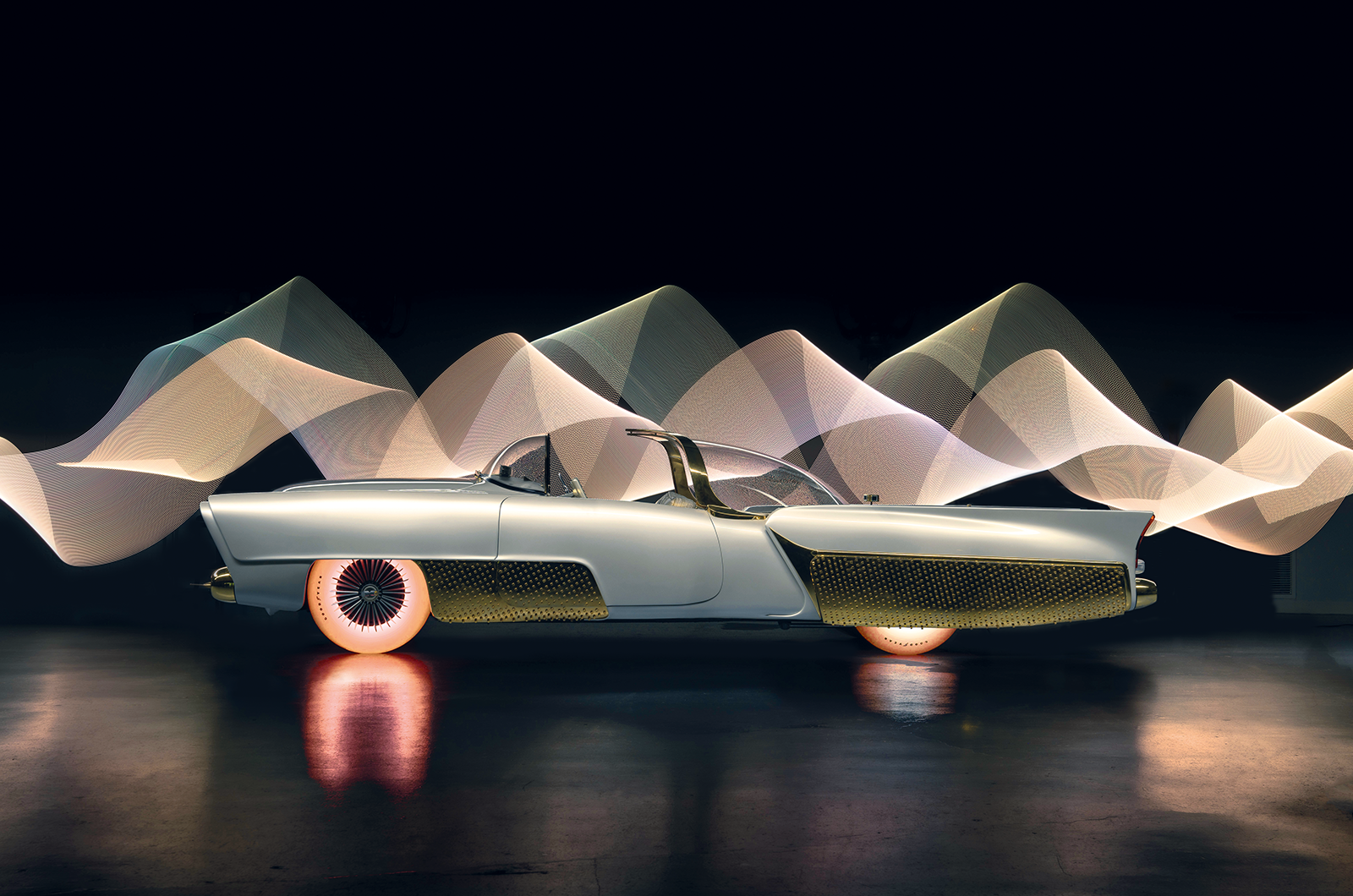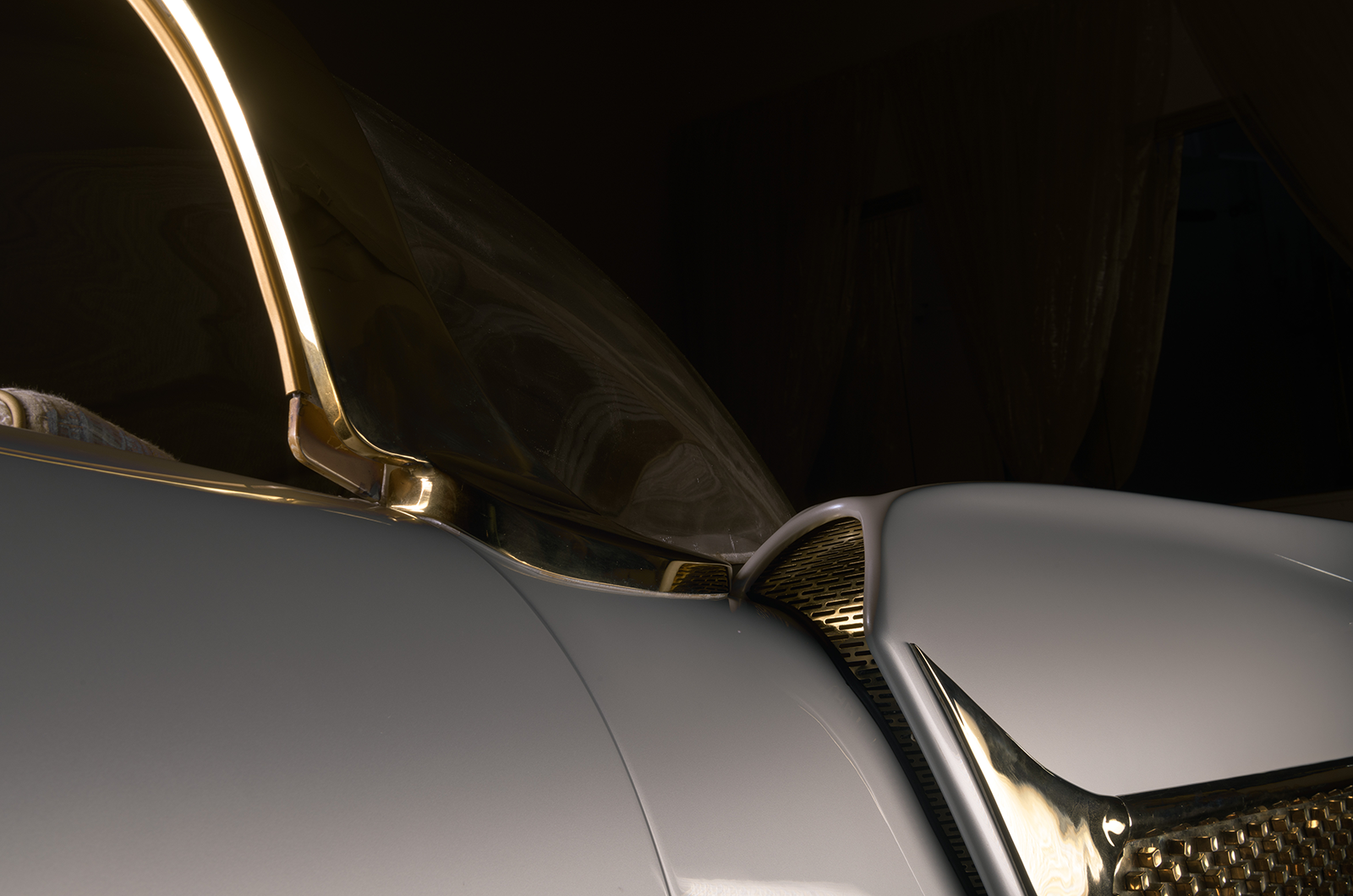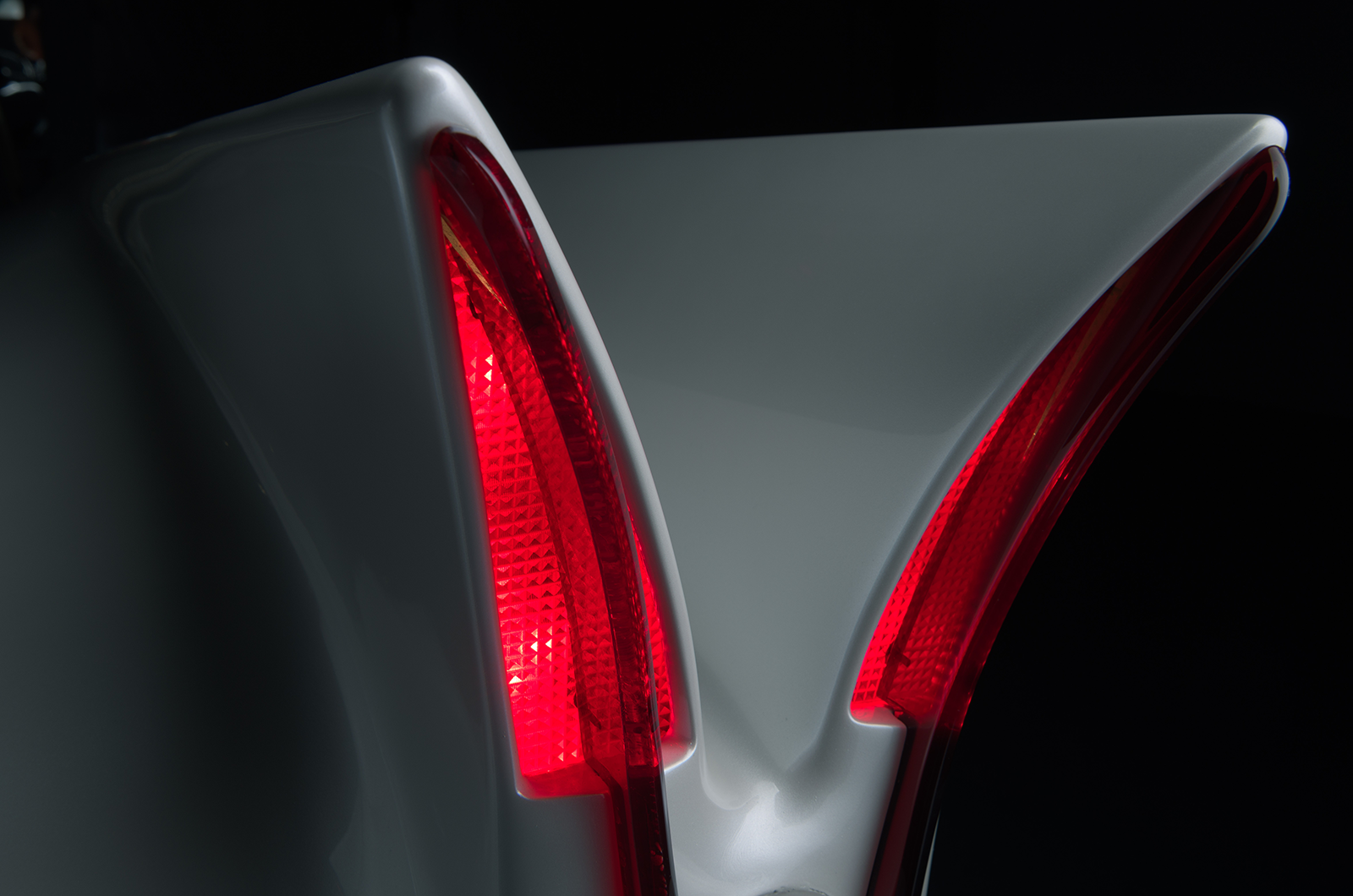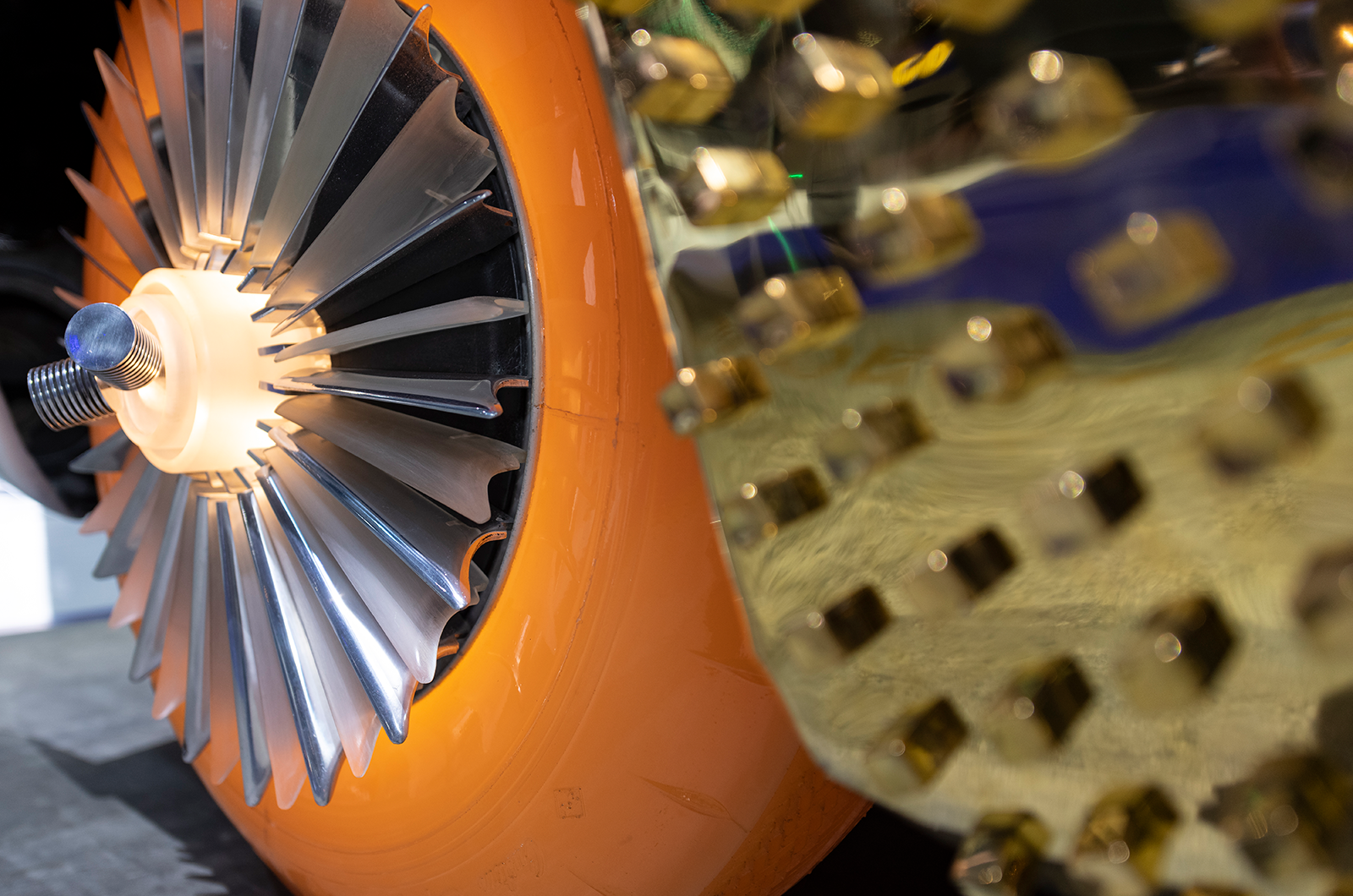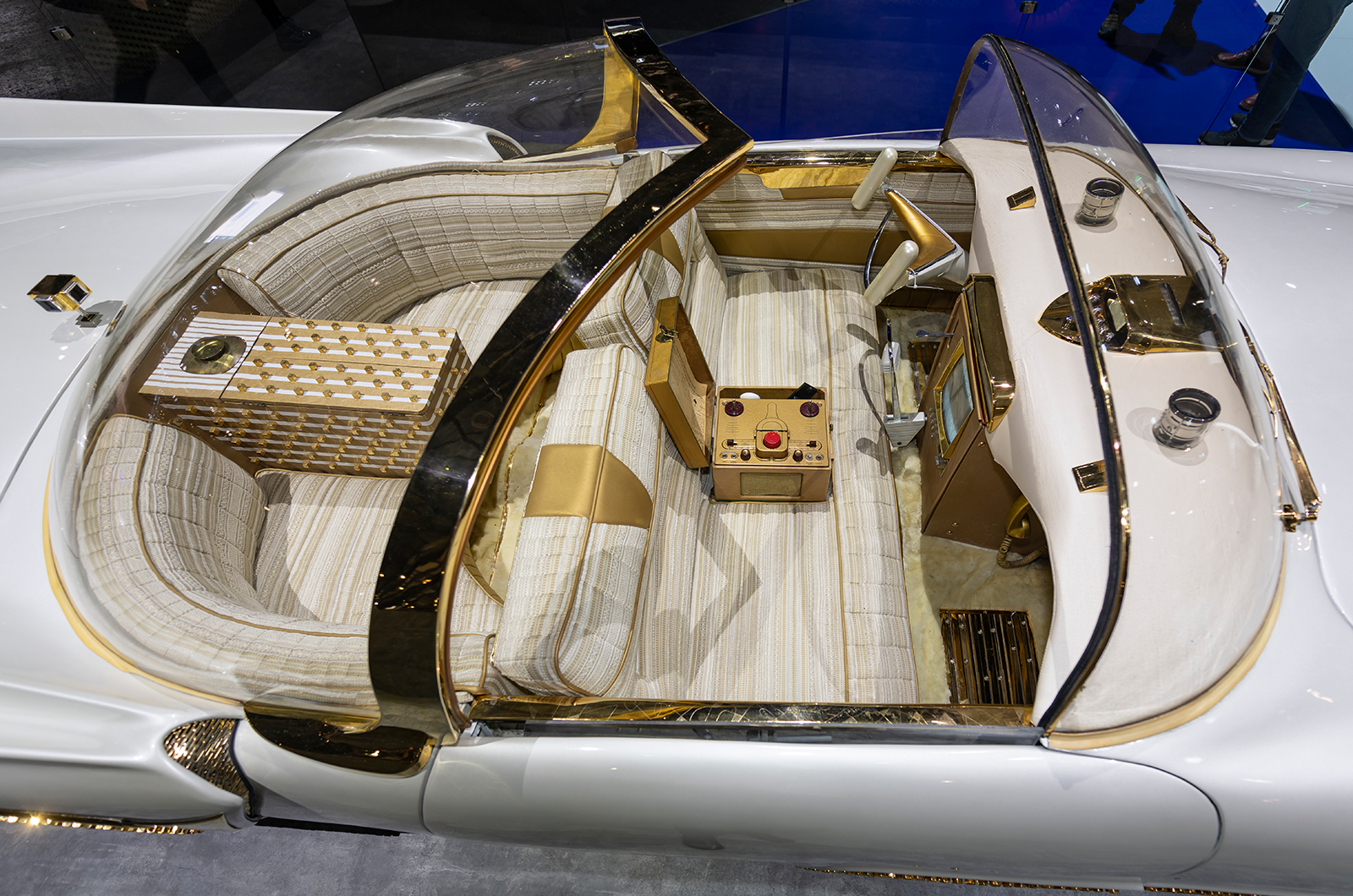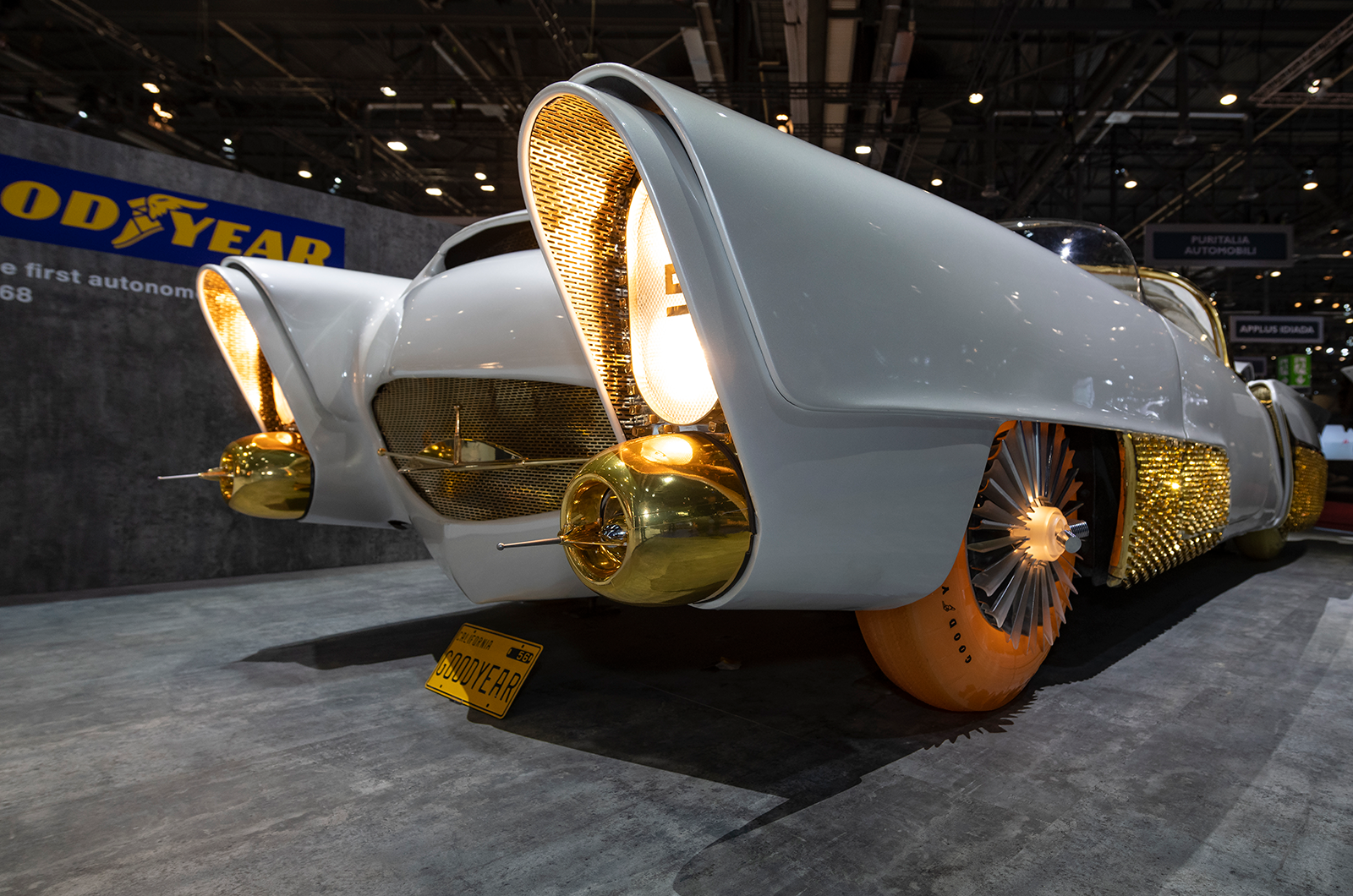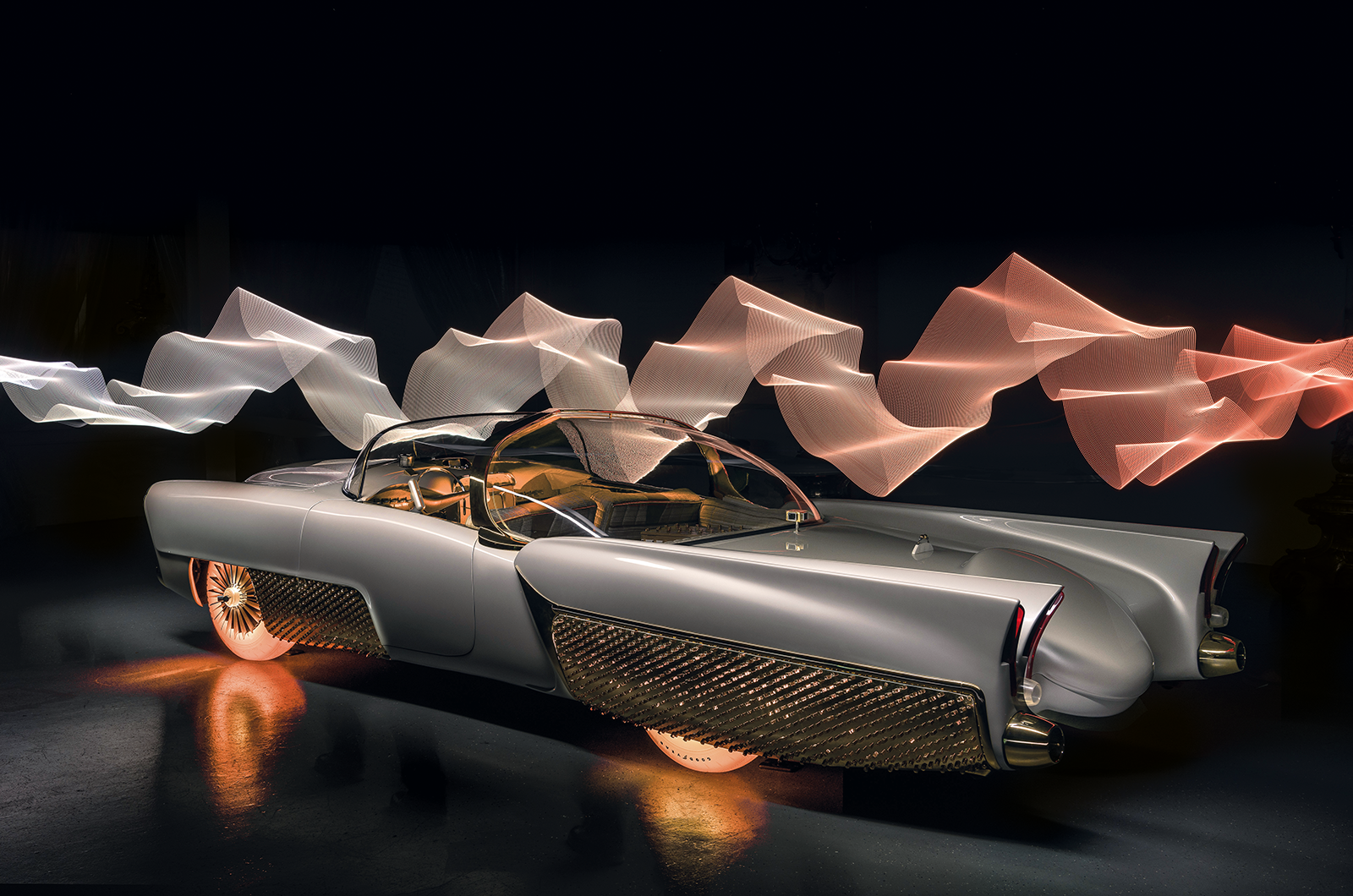But it quickly became clear that the costs of recreating the pneumatic Neothane tyres would prove prohibitive.
Unbowed, and with just 40 days to find a solution, Buckley and Streetsboro, Ohio, firm The Technology House devised a way of creating five bespoke tyres that were capable of being driven on.
“We formed the recreations using an eight-piece silicone mould made from a vintage Kelsey tyre, and cast solid – rather than pneumatic – urethane tyres on reproduction Golden Sahara II wheels,” says Buckley.
“Like concrete, urethane produces heat as it cures – 209ºF [98ºC] in this case. The LEDs were rated to 194ºF [90ºC], so we installed three strips in case they failed – that’s why the tyres are so much brighter today than they were in period.”
With a similarly tight schedule for reviving the rest of the car, a full nut-and-bolt restoration was out of the question.
“Getting it to Geneva was a repair – we were putting lipstick on it,” says Olsen. “We thought we could get away with just cleaning the interior, but it was mouldy and damp so it wasn’t to be – it had to be completely redone. We managed to match the material with a period fabric, but we had to totally remove the paint and the wiring was really bad.
“Customisers back in the day tended to use materials that were not initially intended for cars, so the type and gauge of wire varies wildly – it was a delicate balance between trying to preserve the way it was done originally, but still having those features demonstrable today.”
The jaw-dropping cabin of the Golden Sahara II in its entirety
The further the team went, the clearer it became that some of the gadgets touted during its time on the show circuit had been talked up – unsurprising given Street’s flair as a showman.
“Whether he was testing things, or whether he had the vision but simply hadn’t done it yet, some features just weren’t there,” says Olsen. “For example, the front bumper cones with antennae on them. Street had talked about the car having radar but there was no such system, though he may have applied for a patent.”
Street had also widely boasted of a 525bhp ‘high-octane’ engine, but beneath the bonnet lay a seized-solid 318cu in ‘Y-block’ V8 with a two-barrel carb, as found in a standard Lincoln Capri.
“There was a little bit of showmanship involved, but that’s part of the car’s allure,” says Olsen. “It’s 80% accurate, 20% showmanship.”
Speakeasy Customs managed to turn the job around in just three months to be ready for Geneva, but not everything went according to plan.
The car was damaged in transit and the bumper cones had to be hastily recreated using filler and metallic vinyl, leading to a second restoration at Danrr Auto Body in Lake in the Hills, Illinois, once the Sahara II had been repatriated from Switzerland.
The cabin tech is amazing – and so is how it is upholstered
As well as being repainted, the shape of the nose was altered to more accurately reflect period images from the early ’60s – Speakeasy’s faithful restoration seems to have included a dent in the front valance, after the car bottomed out on a kerb at some point during Street’s ownership.
In addition to conventional restoration techniques, technology that was inconceivable in the 1950s – even to Street – played a key part in both rebuilds. Alonzo kicked things off by using a 3D printer to replace the hubcap fins that had gone missing during the car’s internment.
“First they were 3D scanned, then printed from a material that could be buffed and polished,” explains Buckley, who played a vital role in the project.
“They resembled the originals so closely it was almost impossible to tell them apart.”
Recreating a damaged tail-light lens required more intricate work, says Olsen: “All four look the same, but they are all completely different. We had to scan one by hand and 3D print it in solid white plastic. That piece was then used to create a mould, into which we poured acrylic that matched the colour of the lens.”
Getting the Golden Sahara II to Geneva was quite a task, given its as-found condition
Perhaps the biggest challenge during the ongoing restoration has been deciphering and reviving the complex electrical systems, which had been created without thought to future repairs and, crucially, without a schematic drawing.
The team started where it felt most comfortable, with the television. “When we got it out, it had the same UHF/VHF connectors I remembered as a kid – I had flashbacks to hooking up my Atari games system,” laughs Olsen.
“As well as powering the TV, we were able to feed a signal via a small, hidden DVD player, so we can loop period footage of Jim Street displaying the vehicle.”
Some of the more intricate gizmos are still on the to-do list, including the touchpad steering with its hydraulic solenoid pack and separate power-steering pump, not to mention a fearsome wiring harness.
“It isn’t currently hooked up, but all the parts are there to restore it,” says Buckley.
Klairmont, Olsen and Buckley’s enthusiasm for the project is palpable, and it’s surely only a matter of time before the car’s out-of-this-world gadgetry is once again wowing the crowds.
This custom creation can now shine again
The Golden Sahara II’s enduring appeal is no doubt partly due to its disappearance while at the peak of its power to amaze, yet the reason why remains a mystery.
“The paint deteriorated so badly it was probably due for restoration when Jim put it into hibernation,” suggests Olsen, “and the availability of tyres may have played a part.”
Goodyear’s experiments with urethane ended in the ’60s – despite their breathtaking looks they lost traction in the wet, became unstable at more than 65mph and melted under heavy braking.
“Also, Street had travelled across the US for three or four years, and I’ve been told by people who knew him that he was just tired.”
In the end, perhaps technology caught up with Street and, rather than see his beloved ‘car of the future’ become a relic of the past, he chose to quit while he was ahead. Whatever the reason, now at last his legacy lives on.
Images: Olgun Kordal/Goodyear
Thanks to Goodyear; Klairmont Kollections
READ MORE
How to get your classic car fix during the coronavirus lockdown
Falling in love again with the Lancia Aurelia B50 Cabriolet
It’s a Jaguar XK120 – but not as you know it
Grand Palais: the DS coupé Citroën should have made
Greg MacLeman
Greg MacLeman is a contributor to and former Features Editor of Classic & Sports Car, and drives a restored and uprated 1974 Triumph 2500TC

